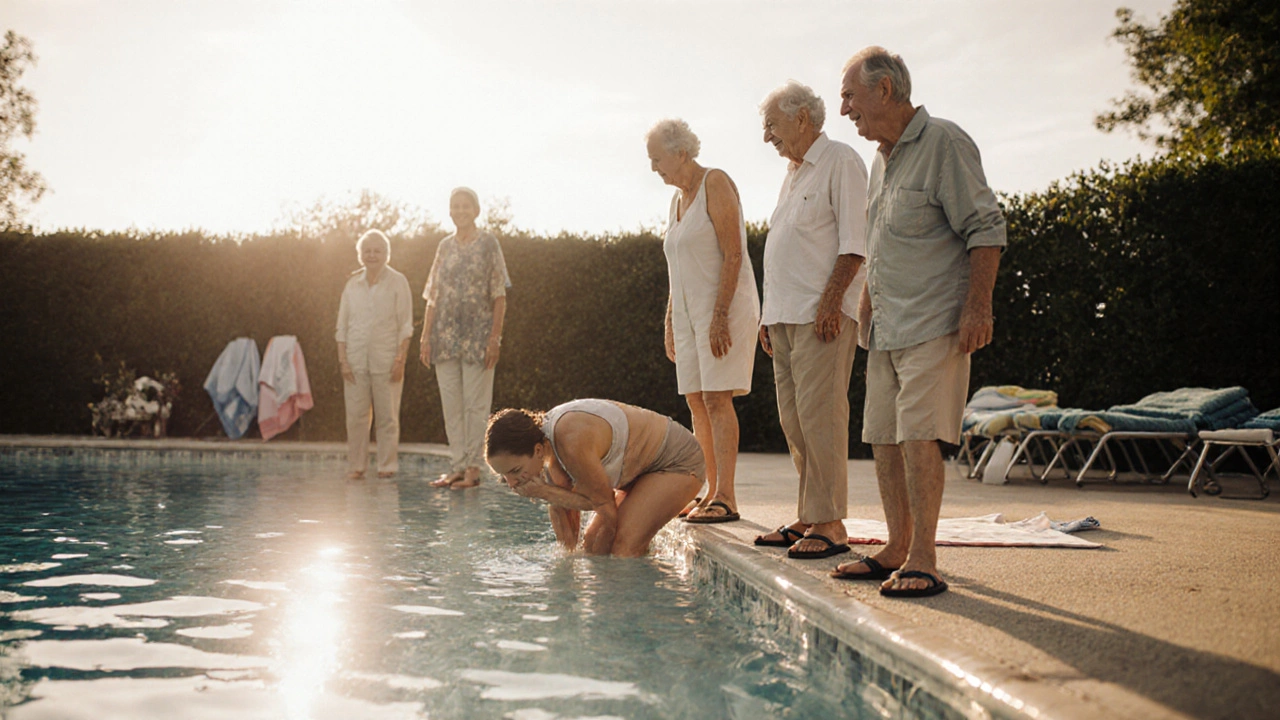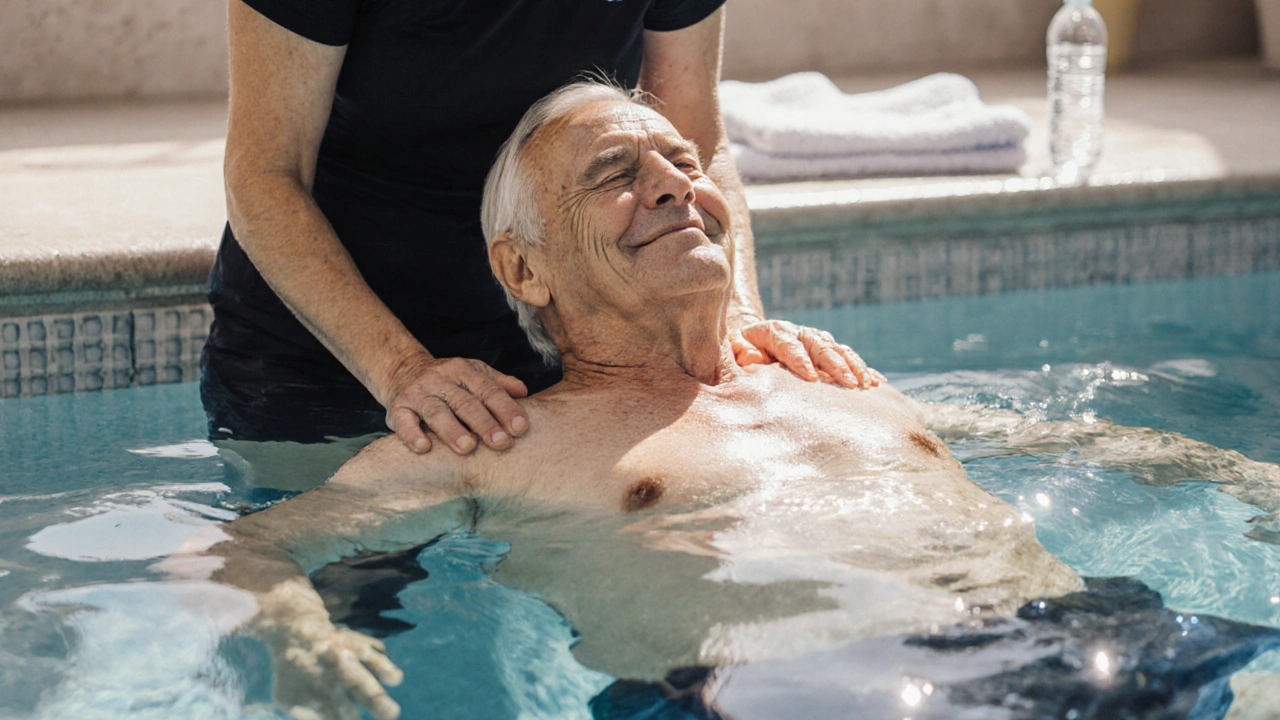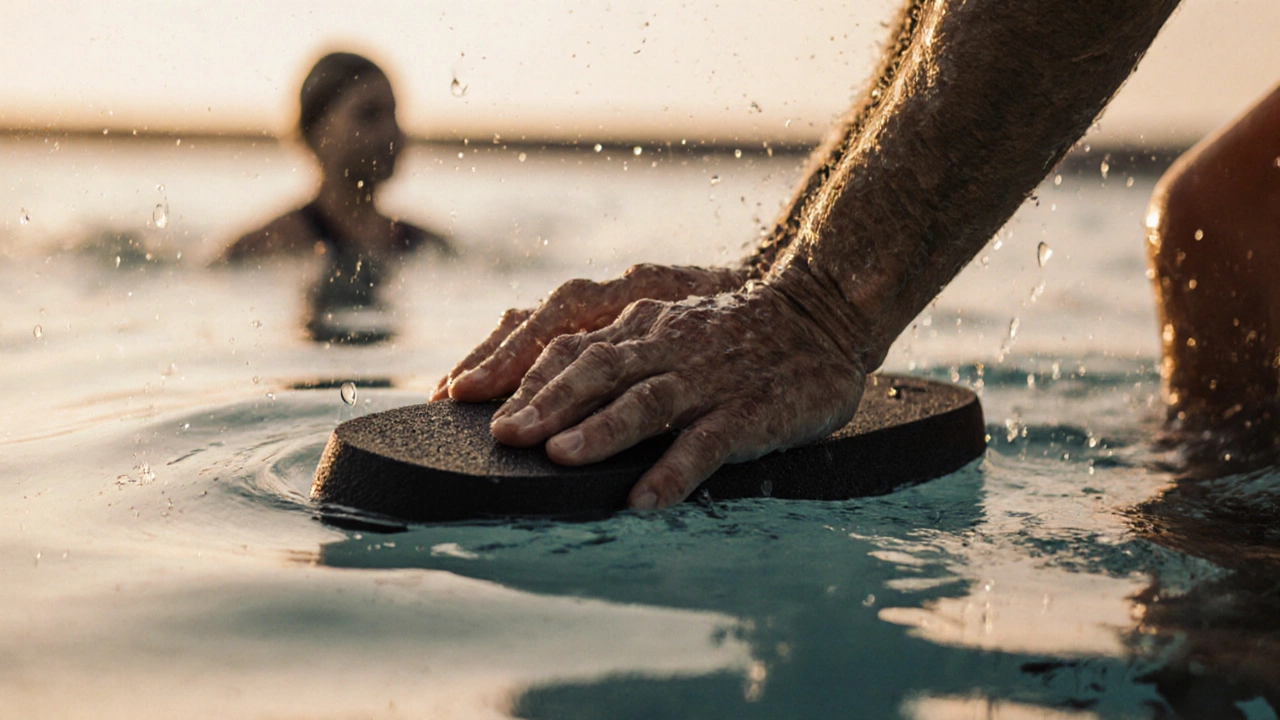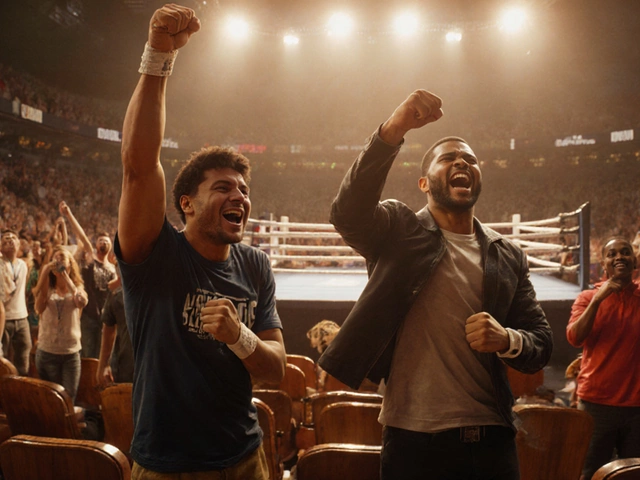
Swimming November 16, 2025
Can Adults Still Learn How to Swim? Yes - Here’s How to Get Started
Most people think if you didn’t learn to swim as a kid, you’re stuck. That’s not true. I’ve seen people in their 40s, 50s, and even 70s step into a pool for the first time - scared, shaky, but determined. By the end of eight weeks, they’re gliding across the water like they’ve always known how. You don’t need to be young. You don’t need to be athletic. You just need to start.
Why so many adults avoid swimming
The biggest reason adults don’t learn to swim isn’t lack of time or money. It’s fear. Fear of water. Fear of looking silly. Fear of failing in front of others. A 2023 survey by Swim England found that nearly 1 in 3 adults in the UK can’t swim 25 meters without help. Most of them never learned as kids, and by the time they’re adults, the thought of getting back in the water feels impossible.It’s not about being out of shape. It’s about mindset. You don’t need to be a strong swimmer to begin. You just need to be willing to stand at the edge of the pool and take one step in.
What you actually need to start
Forget expensive gear. You don’t need a fancy swimsuit, goggles, or a swim cap to begin. Most public pools offer basic lessons with equipment included. All you really need is:- A swimsuit you feel comfortable in
- A towel
- Waterproof flip-flops
- A willingness to be a beginner again
Some people buy goggles right away. Others wait until they’re comfortable putting their face in the water. That’s fine. There’s no timeline. Progress isn’t measured in laps - it’s measured in small wins. The first time you blow bubbles underwater. The first time you float without holding the wall. That’s your victory.
How adult swim lessons work
Adult swim classes are nothing like kids’ lessons. They’re quiet, patient, and focused on your pace. Most pools offer private or small group lessons (3-5 people max). Instructors are trained to work with nervous adults. They don’t rush. They don’t yell. They don’t compare you to anyone else.Here’s what a typical 6-week course looks like:
- Week 1-2: Getting used to the water. Breathing exercises, floating on your back, walking in shallow water, getting your face wet.
- Week 3-4: Kicking with a board, gliding short distances, learning to push off the wall.
- Week 5: Arm strokes - usually front crawl or breaststroke, whichever feels more natural.
- Week 6: Putting it all together. Swimming 10-15 meters without stopping.
Some people reach 25 meters in four weeks. Others take ten. Both are fine. The goal isn’t speed. It’s confidence.

Common fears - and how to beat them
You’re not alone if you’re scared of:- Going underwater: Start by holding your breath and dipping your face in for two seconds. Then three. Then five. Use a nose clip if you need to. It’s not cheating - it’s a tool.
- Not being able to touch the bottom: Most adult lessons happen in the shallow end. You’ll be able to stand the whole time until you’re ready to float. No one expects you to swim in deep water right away.
- Feeling embarrassed: The other people in your class? They’re scared too. You’ll notice they’re all focused on their own progress. No one is watching you.
- Worrying you’re too old: I’ve taught a 72-year-old man to swim in Bristol. He did it because he wanted to go on a family holiday without feeling anxious. He’s now swimming laps three times a week.
What swimming gives you - beyond the water
Swimming isn’t just about being able to swim. It’s about reclaiming control. For many adults, learning to swim is the first time in years they’ve done something completely new. It rebuilds self-trust.Health benefits? They’re real. Swimming is low-impact, so it’s gentle on joints. It improves heart health, posture, and breathing. But the biggest change isn’t physical. It’s mental. People who learn to swim as adults often say they feel more capable in other areas of life too. They take on challenges they used to avoid.

Where to find adult swim lessons
Most community pools, YMCAs, and leisure centers offer adult beginner classes. In the UK, Swim England runs a network of certified instructors. Check your local council’s website - many offer subsidized lessons. Some even have classes just for women, or for people with anxiety.Look for these keywords when searching:
- “Adult swimming lessons near me”
- “Beginner swim class for adults”
- “Swim for nervous adults”
Avoid places that advertise “fast track” or “learn to swim in 3 days.” Real progress takes time. The best instructors will tell you that upfront.
What to expect on your first day
Show up 10 minutes early. Bring your swimsuit, towel, and a water bottle. The instructor will probably ask you a few simple questions: “Have you ever been in a pool?” “What are you most nervous about?” Don’t hold back. The more honest you are, the better they can help you.Don’t expect to swim laps on day one. You might just stand in waist-deep water and practice breathing. That’s okay. That’s the point.
And if you feel like crying? That’s normal too. Many people do. It’s not weakness. It’s release.
What happens after you learn
Once you can swim 25 meters without stopping, you’ve crossed a line. You’re no longer someone who can’t swim. You’re someone who can.Some people stop there. Others keep going. They join lap swimming groups. They take lessons in open water. Some even sign up for triathlons. But even if you never swim more than 50 meters, you’ve changed your life.
You’ve proven to yourself that it’s never too late to learn something hard. And that’s worth more than any medal or time on a clock.
Is it too late to learn to swim if I’m over 50?
No, it’s never too late. People in their 60s, 70s, and even 80s have learned to swim. Age doesn’t stop you - fear does. With the right instructor and a patient mindset, you can learn at any age. Swimming is one of the safest exercises for older adults because it’s gentle on joints and improves balance.
How long does it take an adult to learn to swim?
Most adults can swim 25 meters confidently in 6 to 10 lessons, depending on their comfort level. If you’re very nervous, it might take longer - and that’s okay. Progress isn’t measured in weeks, but in moments: the first time you float, the first time you breathe without panicking. Those are the real milestones.
Do I need to know how to float before I can swim?
Not at all. Floating is a skill you learn along the way. Many adult lessons start with holding onto the wall and kicking. Floating comes naturally once you stop fighting the water. Instructors often use flotation aids like noodles or kickboards to help you feel safe while you build confidence.
Are adult swim lessons expensive?
They’re usually affordable. A 6-week course at a local pool costs between £40 and £80 in the UK. Some councils offer discounts for seniors or low-income residents. Private lessons are pricier (£25-£40 per hour) but can be helpful if you have severe anxiety. Most public lessons are group-based and very reasonably priced.
What if I’m scared of deep water?
You won’t be asked to go into deep water until you’re ready. Most adult lessons happen in the shallow end, where you can stand. Even when you move to deeper areas, you’ll be supervised and close to the edge. Many people never swim in deep water - and that’s perfectly fine. Being able to swim 25 meters in shallow water is still a huge achievement.




